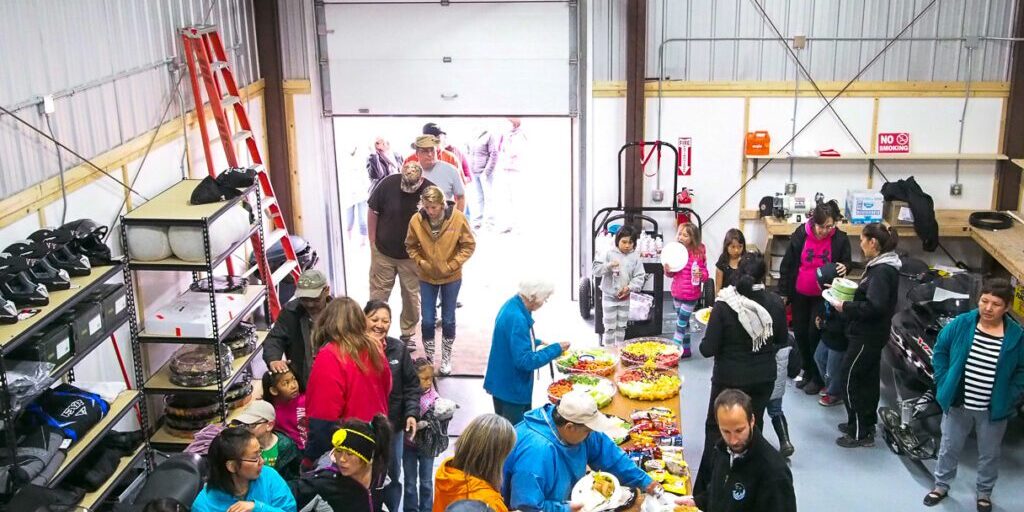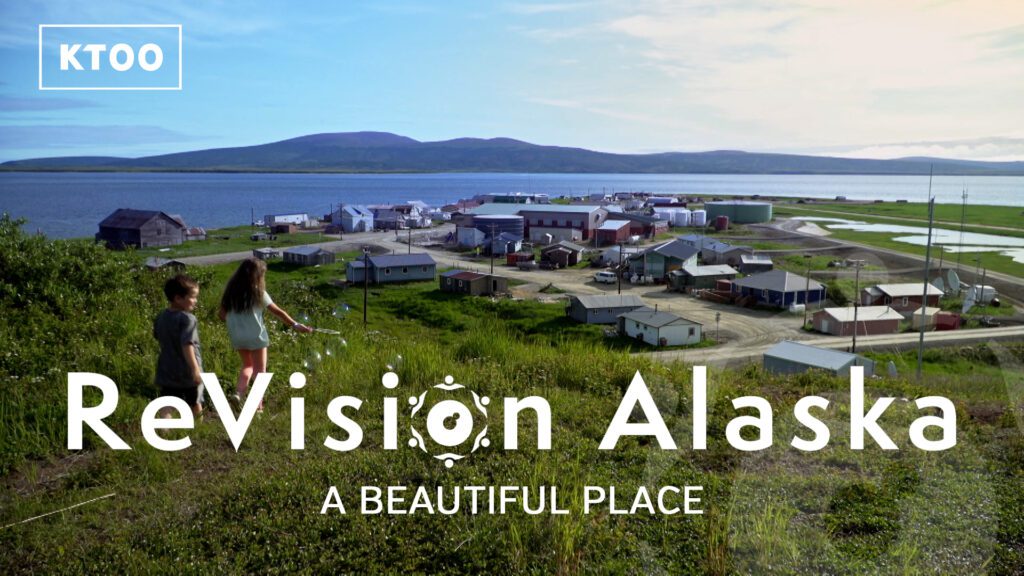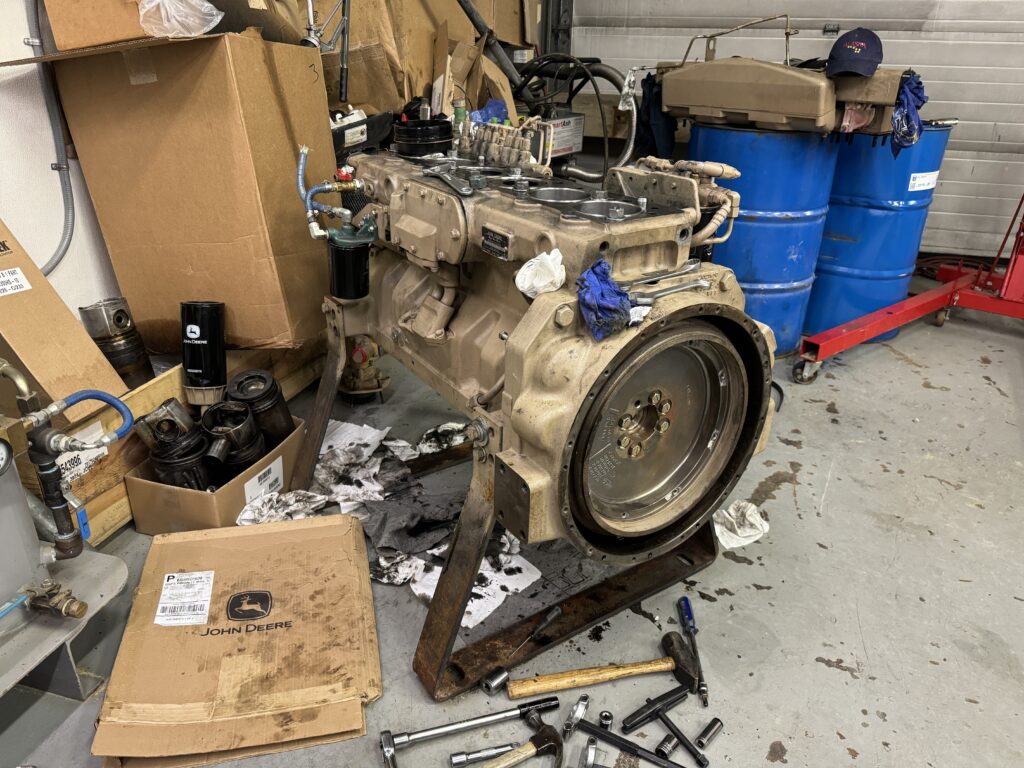The Rasmuson Foundation is the largest philanthropic organization in Alaska, awarding $33,500,000 in grants in 2013—including a match-funded grant to this station for an expansion project. But in the last few years, only about 1% of that money has gone for projects in the Bering Strait Region. Now, foundation members are traveling to small communities in the region to see what kinds of programs residents would like to see funded.
Six folks from the Rasmuson Foundation landed in Nome aboard a private jet Wednesday morning. Fog kept them from making it to White Mountain, the first of three trips planned for the day. But at noon, board members, staffers, and the foundation’s president took off in a chartered plane from a regional carrier to Golovin, for the dedication of a new Search and Rescue building.
“We have experienced, and assisted in, a lot of Search and Rescues, including searching for lost people around surrounding villages,” Irene Navaro told a crowded room of residents and Rasmuson visitors. Navaro is head of the Chinik Eskimo Community in Golovin, and explained the reasons why people there have pushed hard for the completion of a garage-sized building to help with searches. “We’ve had plane crashes close to Golovin that we were able to assist in rescuing.”

People care strongly about search and rescue in Golovin because it happens a lot: snowmachiners traveling the coast break down, the Iditarod, Iron Dog, and local races all pass through. And stuff just doesn’t always go as planned.
Jack Fagerstrom says residents don’t usually want to wait for the state troopers to fly up, or sit still until weather breaks when it’s their neighbor or relative that’s missing. The city got money to buy communications equipment and snowmachines in 2009, and funds from NSEDC matched by Rasmuson for a total cost of around $600,000 to build the new facility. The point, Fagerstrom explained, is to make sure searchers and their equipment are as safe and prepared as possible.
After lunch inside the new building and a quick tour of Golovin from the back of a pickup truck, the Rasmuson crew got back on the plane and flew across the Norton Sound to Saint Michael.
Kawerak president Melanie Bahnke helped coordinate the visit, and said sites were picked to show the Rasmuson delegation the range of needs across the region.
“They also wanted to go to villages where they haven’t had as much of a financial presence, so we took them out to St. Michael today,” Bahnke said, ducking to avoid the wind in the bed of a truck heading into town from the airfield.

Though St. Michael got a few thousand dollars for chairs and tables some years ago, part of Rasmuson’s reason for rural trips is giving out advice for how to succeed in securing more funds in the future.
“Where the trustees of our foundation choose to invest is in projects that serve a wide section of the community. So we do a lot of things for kids, for elders,” said the foundation’s president, Diane Kaplan, as she answered questions from a small audience at the head start building in St. Michael. A lot of their money, especially smaller grants under $25,000, goes towards things like replacing gym floors, paint supplies, or a new roof—projects that aren’t exactly flashy, but make a difference for residents on the ground.
And that’s exactly what St. Michael mayor Bobby Andrews is eager for help with.
“We are very excited—we’ve been thinking of where we can get some funding to do our flooring, our carpet, our gym. Knowing the carpet is so old and that we have 3 and 4-year-olds coming in for school daily, and hopefully we can get some help with doing our floors,” Andrews said.
While new carpeting may seem small, those are the tangible improvements in people’s lives that foundation vice chair Cathy Rasmuson says aren’t apparent until you actually go to rural communities.
“I think coming into the villages is a very important part of the Rasmuson Foundation, because reading about a project and a proposal on paper is not the same thing as meeting the people that are involved in it and that are passionate about it,” Rasmuson said, sitting in the back of a plane heading back to Nome at the end of the day.
Foundation members, joined by representatives from the Alaska Humanities Council, NSEDC, and Kawerak, are scheduled to travel today to Koyuk and Elim to hear more about funding needs in the Bering Strait Region.
And Wednesday evening, Cathy Rasmuson officially announced the foundation will be awarding $1.3 million to the city of Nome as part of an agreement to construct the Beringia Center inside the planned Richard Foster Building.







